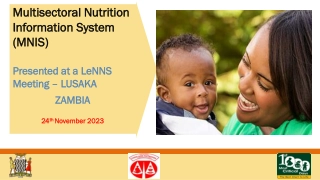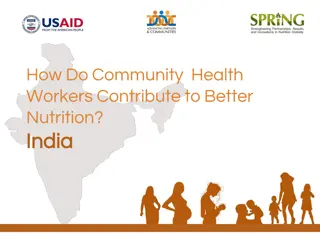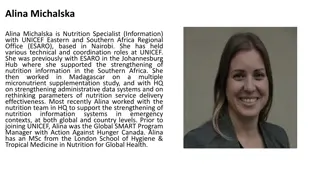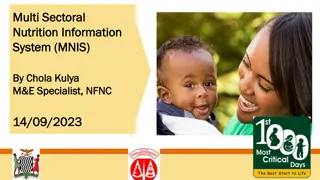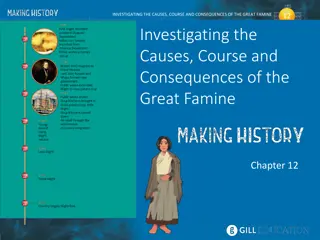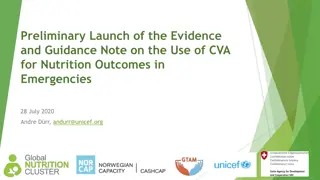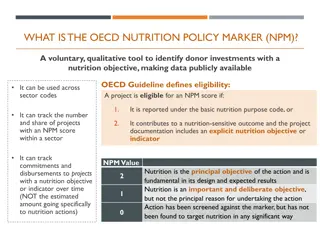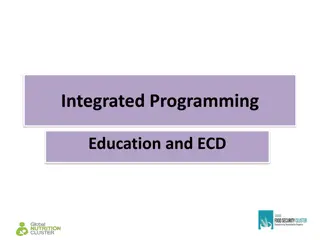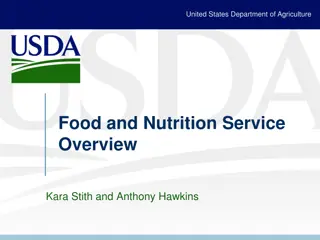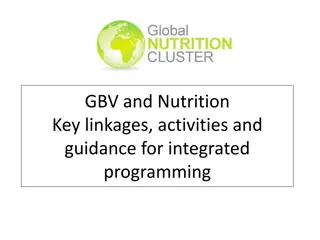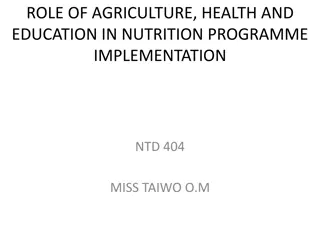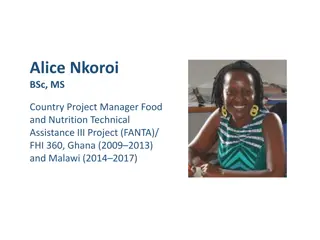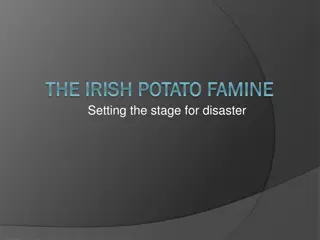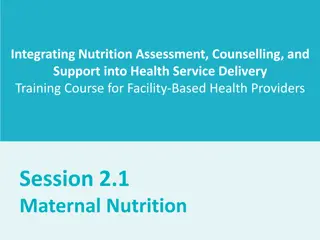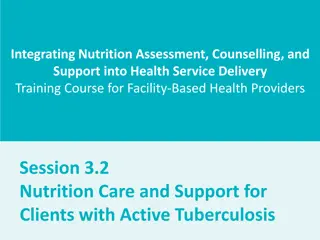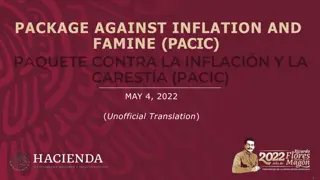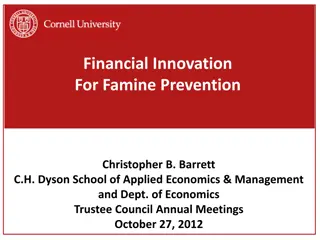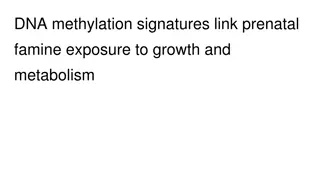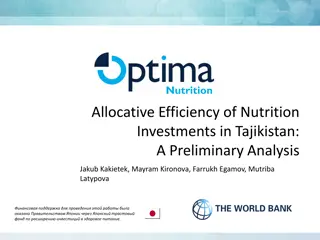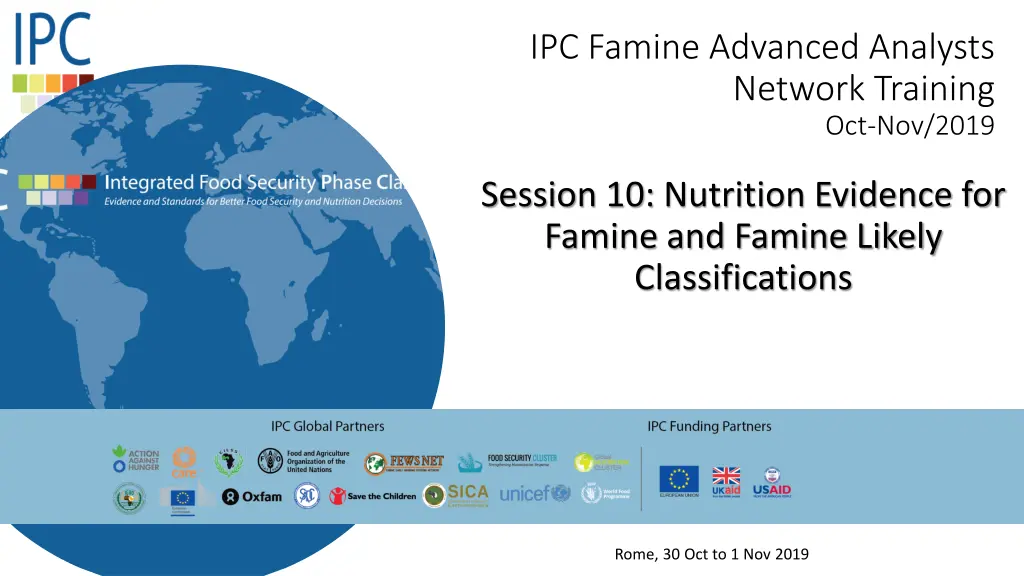
Key Considerations for Nutrition Evidence in Famine Classification
Understand the crucial aspects of nutrition evidence needed for accurate famine classification, focusing on acute malnutrition among children aged 6-59 months. Learn about reliable and somewhat reliable evidence criteria, survey methods, and validation protocols for effective classification.
Download Presentation

Please find below an Image/Link to download the presentation.
The content on the website is provided AS IS for your information and personal use only. It may not be sold, licensed, or shared on other websites without obtaining consent from the author. If you encounter any issues during the download, it is possible that the publisher has removed the file from their server.
You are allowed to download the files provided on this website for personal or commercial use, subject to the condition that they are used lawfully. All files are the property of their respective owners.
The content on the website is provided AS IS for your information and personal use only. It may not be sold, licensed, or shared on other websites without obtaining consent from the author.
E N D
Presentation Transcript
IPC Famine Advanced Analysts Network Training Oct-Nov/2019 Session 10: Nutrition Evidence for Famine and Famine Likely Classifications Rome, 30 Oct to 1 Nov 2019
Content of the session Nutrition evidence required for Famine classifications Nutrition evidence required for Famine Likely classifications Additional nutrition evidence that can be used with Famine Likely classifications
Nutrition Evidence Key Considerations The nutrition outcome used in Famine/Famine Likely classification is Acute Malnutrition among children 6-59 months of age Two indicators are used to measure acute malnutrition among children 6-59 months: GAM based on WHZ GAM based on MUAC GAM based on WHZ can be either Reliable evidence or Somewhat Reliable evidence (depending on the method used to collect the evidence) GAM based on MUAC is always Somewhat Reliable There is NO indirect evidence for acute malnutrition Reliable evidence should be used for Famine classification Either Reliable or Somewhat Reliable evidence can be used for Famine Likely classification
What evidence is Reliable evidence in acute malnutrition? GAM based on WHZ from surveys representative at the unit of analysis with adequate precision and validated by an authority in the country Cluster surveys with 25 clusters (sample size to be specified) Simple or systematic surveys with 150 observations
What evidence is Somewhat Reliable Evidence in acute malnutrition Surveys representative at the unit of analysis Estimates validated with caution (for GAM based on WHZ only) Estimates based on GAM based on MUAC from surveys rated good method GAM based on WHZ from disaggregated surveys representative at a higher administrative unit 5 clusters and 100 observations GAM based on WHZ/MUAC from sentinel sites 5 sites per unit of analysis with 200 total observations (if the area is pastoral, 5 sites with 100 observations is acceptable) GAM based on MUAC from screening Exhaustive screening (door-to-door) carried out at the unit of analysis (>80% coverage) or Screening from three sites (selected either randomly or purposively, for variability reasons) from the unit of analysis and 200 observations selected randomly or exhaustively (>80% coverage) from each site and with convergence of estimates from these sites Surveys from similar areas GAM based on WHZ from a survey of good method from a similar area.
Additional Somewhat Reliable Evidence for acute malnutrition ONLY to be used in Famine Likely GAM based on MUAC from: 1. Disaggregated surveys representative at a higher administrative unit Evidence must add to at least 5 clusters and 100 observations from the same season of analysis. 2. Surveys of similar areas Evidence must be collected from surveys rated good method (refer to Protocol 2.4) and come from the same season of analysis. 3. Historical evidence Evidence must have been collected during the same season of analysis from at least 2 similar years in the last 5 years. 4. Recent surveys Estimates of evidence collected within the last 6 months but not from the same season of analysis (12 months for areas with no seasonality)
Use of GAM based on MUAC data Pop quiz 1: GAM based on MUAC can be used as an indicator to classify Famine if it comes from a SMART survey
Use of GAM based on MUAC data Pop quiz 2: If both GAM based on MUAC and GAM based on WHZ are available and meet IPC criteria, either one of them can be used in the Famine Likely classification
Use of GAM based on MUAC data Pop quiz 3: MUAC screening in a district of Amran in Yemen shows prevalence of 16.8%. The screening covered 98% of the children under 5. Can this be used in Famine classification?
The End IPC Global Partners IPC Global Partners With the support of With the support of


